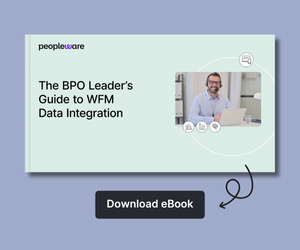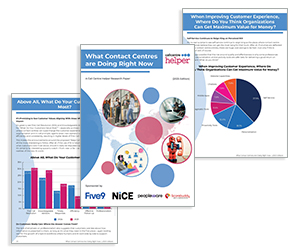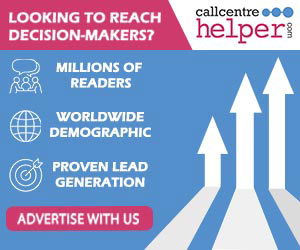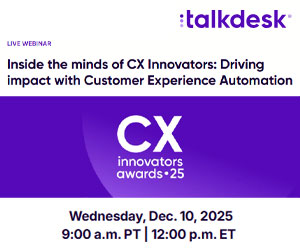In contact centres, managing agent time effectively is key to success.
To find out more we asked Ray Agar, Solutions Consultant at Peopleware (formerly injixo), to break down the differences between occupancy and utilization and share strategies to optimise them.
Video: Top Tips to Optimize Occupancy and Utilization
Watch the video below to hear Ray explain the differences between occupancy and utilization, and how contact centres can optimize them:
Thanks to Ray Agar, Solutions Consultant at Peopleware (formerly injixo), for contributing to this video.
What Is Occupancy?
Occupancy measures the percentage of time an agent spends actively working, such as being on calls or completing after-call work (ACW). It answers the question: What percentage of time are agents busy or available for more work while logged in?
“For me, occupancy is the percentage of time that an agent is either on a call or in ACW, or doing after-call work. And it answers the question for what percentage of the time are the advisors logged in, live, and actually busy, or are they available to do more.
It’s really important in schedule design, so I would use it when I’m designing my schedules or to improve my schedule optimization. Really it’s to make sure that you’re using your resources effectively.”
Occupancy is crucial for schedule design and ensures resources are used efficiently without overloading agents.
What Is Utilization?
Utilization calculates the percentage of paid work time that agents spend logged in and assisting customers or being available.
“Utilization is the percentage of time that the agent is available for work. And it answers the question for what percentage of the time that I pay my agent are they logged in and assisting, or available, or speaking to a customer.
It also takes into account internal shrinkage activities, things like coaching and training sessions, team meetings, and one-to-ones, all those kinds of things.
And it’s really important in calculating overhead costs and shrinkage for when you’re designing your schedules.”
Unlike occupancy, utilization includes internal shrinkage activities such as training, coaching, team meetings, and one-on-ones.
This metric helps assess staffing needs, agent efficiency, and overhead costs.
Key Differences Between Occupancy and Utilization
The two metrics serve different purposes:
- Occupancy reflects how busy agents are with customer interactions, helping to identify workload issues and prevent burnout.
- Utilization measures overall agent efficiency, considering both active work and other paid activities.
“For me, utilization helps you measure agent efficiency. It can be used to understand staffing requirements, and helps you measure things like shrinkage and overheads.
Whereas occupancy reflects how busy, or not, your agents are. It helps you understand the the workload, and whether your agents are due to burn out, or whether you’re going to have high turnover.
Utilization considers the total work time, and that includes things like training sessions, meetings, and one-to-ones, but occupancy only considers the time when advisors are active and actually on the contact centre floor.”
Factors Impacting Occupancy and Utilization
The following things can really affect both utilization and occupancy:
- The types of interactions handled
- Interaction volumes, whether they’re high volumes or low volumes (so high utilization, low occupancy)
- Agent skill levels
- Process efficiency
- Tools and technology used in the contact centre
Tips for Optimising Occupancy and Utilization
If you want to optimize both utilization and occupancy, the contact centres can:
- Implement proper scheduling
- Monitor operations in real time
- Ensure agents take adequate breaks
- Use efficient call routing to match calls with the right agents
- Forecast and staff properly
- Invest in agent training and development
- Streamline workflows
- Provide tools and technology that support agents in their tasks
By understanding and optimising occupancy and utilization, contact centres can improve efficiency, reduce agent burnout, and deliver better customer experiences.
“And most importantly, provide your agents with the right tools and technology to be able to deal with their customer interactions effectively.”
If you are looking for more great insights from the experts, check out these next:
- How to Improve Your Net Promoter Score (NPS)
- Ways to Measure Customer Emotion in the Contact Centre
- Steps to Creating ‘Super-Fan’ Customers
- Examples of Customer Service Empathy Statements
Author: Robyn Coppell
Reviewed by: Robyn Coppell
Published On: 30th Jan 2024 - Last modified: 25th Sep 2025
Read more about - Video, Occupancy, Peopleware, Ray Agar, Top Story, Utilisation, Videos, Workforce Management (WFM)






































